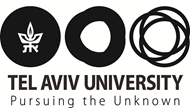Open Access Publishing
Tel Aviv University and MALMAD (Inter-University Center for Digital Information Services) have signed Open Access module agreements with several publishers
According to these agreements, researchers from Tel Aviv University can publish Open Access articles in the publisher’s journals. Articles published within these agreements will be accessible for all, free of charge
What is Open Access Publishing and how does it work?
The advent of the internet has fundamentally transformed access to scientific research outputs and academic publications. Ensuring free access to these resources is vital for advancing research and education. This issue is of significant importance to researchers and academic institutions, particularly in the context of diminishing resources and constrained funding for universities.
In recent years, the scientific community has championed several initiatives aimed at enhancing the accessibility of scientific publications. These efforts have led to the development of distinct "routes" to open access:
 Gold Open Access
Gold Open Access
In this model, articles are published in journals that are freely accessible to all internet users, with the author retaining copyright ownership. This route enables researchers to publish their work in fully open-access journals or hybrid journals, which combine open-access content with subscription-based articles. However, the cost of publication is borne by the author under this model.
 Green Open Access
Green Open Access
This model allows free access to articles only after a specified embargo period, typically ranging from 6 to 18 months. During this period, the publisher retains copyright ownership, and there may be restrictions on the use of the content.
 Diamond Open Access
Diamond Open Access
In this model, non-profit organizations publish articles online without imposing any costs on either readers or authors. However, commercial use of the publications is prohibited.
Where should I publish and which publications should I avoid?
Several factors should be carefully evaluated when selecting an appropriate host for your publication:
- Alignment with the journal’s scope and objectives: Ensure the article aligns with the journal's thematic focus and aims
- Journal ranking and impact: Consider the journal's standing in standard bibliometric indices and its reputation within the academic community
- Audience reach and visibility: Evaluate the journal’s exposure by assessing whether its Open Access platform targets a broad or specialized audience
- Avoiding "predatory" journals: Exercise caution with journals that charge fees for publishing Open Access articles but lack credible academic authority
- Scrutinizing attractive, low-cost offers: Be vigilant about suspiciously low-cost publication offers and verify their legitimacy before proceeding
More information or queries?
Publication related questions can be forwarded to Ms. Alla Offenberg, Head of Journal Acquisition Department, by E-Mail of by phone 03-6408448
Additional information by Publisher:
Researchers can choose publishing open access articles in the publisher's journals at no additional costs
How to publish Open Access in Brill journals
Researchers are not required to take any additional steps when submitting their articles to the publisher. Upon acceptance of a peer-reviewed article for publication, the researcher will be asked whether they wish to select the Open Access option.
If the Open Access option is selected, the article will be automatically directed to such publication modules. To ensure proper affiliation with Tel Aviv University, researchers are advised to use their institutional email address during the submission process.
How to publish Open Access in Cambridge journals
Hybrid Journals: Researchers can publish articles in hybrid journals of the publisher free of charge, subject to the annual quota
GOLD Journals: Researchers receive a 10% discount on publication fees for articles in fully Open Access (GOLD) journals
Flipping Titles: Journals transitioning from hybrid to fully Open Access (GOLD) status during the agreement period are included in the arrangement, allowing researchers to publish in them free of charge, subject to the annual quota
Exceptions: The journals Cell and Lancet are not covered under this agreement
How to publish Open Access in Elsevier journals
Hybrid Journals: Researchers can publish articles in the publisher's hybrid journals free of charge and without limitations
GOLD Journals: Researchers receive a 15% discount on publication fees for articles in fully Open Access (GOLD) journals
Flipping Titles: Journals transitioning from hybrid to fully Open Access (GOLD) status during the agreement period are included in the arrangement
How to publish Open Access in Oxford journals
Researchers have the opportunity to publish in approximately 900 SAGE hybrid journals at a reduced cost of £200
The list of eligible journals is available in the agreement and on the publisher’s website under the "Sage Choice" program
Upon article acceptance, the publisher will notify the researcher that the article can be published in the Open Access module
How to publish Open Access in Sage journals
Tel Aviv University has exceeded its annual quota of open-access articles under the Springer Nature agreement. Consequently, articles submitted between November 5, 2025, and December 31, 2025 cannot be approved for open-access publication through the institutional agreement. Open-access publication during this period is still possible, but the fees will not be covered by the agreement. Approvals under the new agreement will resume on January 1, 2026.
How to publish Open Access in Springer journals
Researchers can choose publishing open access articles in the publisher's hybrid journals at no additional costs
How to publish Open Access in Taylor & Francis journals
Researchers will be able to publish Open Access articles in Wiley without paying a fee
Once the article was accepted for publication in one of Wiley’s hybrid journals, the Open Access module would be the default one. This option should be confirmed
How to publish Open Access in Wiley journals



